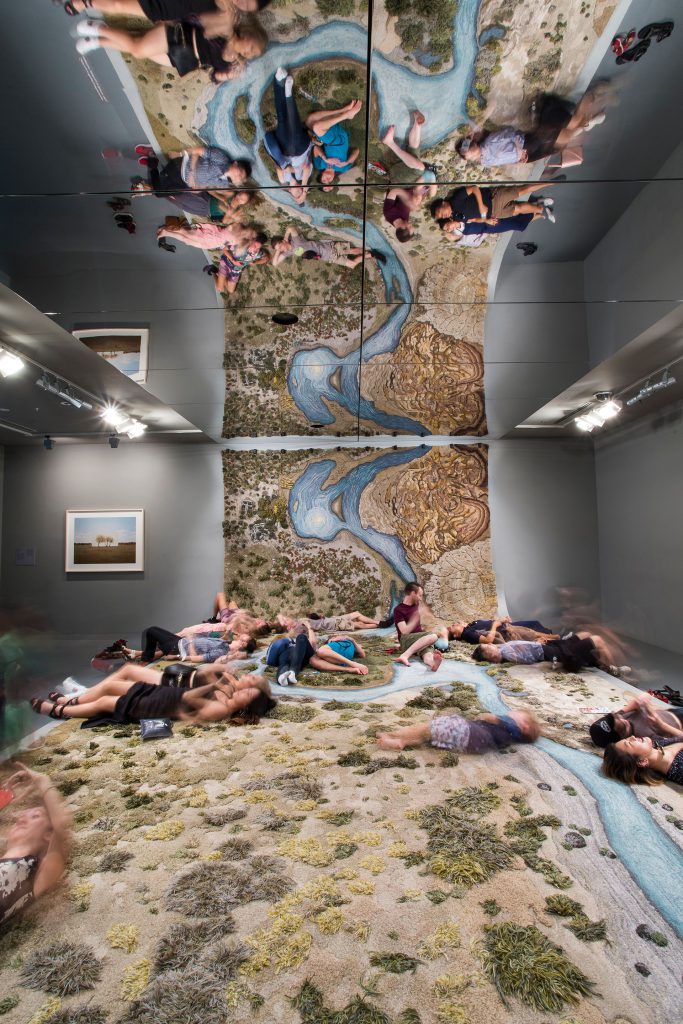Silence in Activism – is that legit?
In my first post on the (il)legit activism blog, I’d like to approach the topic of silence in activism. Can silence convey a message? What can silence achieve? And how can we understand and interpret silence? Can silence be legit activism?
When I hear the word ‘activism’, many things come to mind: People in the streets marching, holding up banners, and chanting the message they want to get across. Also, demonstrations, rallies, speeches, petitions, marches and more. None of these immediate associations with activism are silent. On the contrary, most of them are rather loud, and to some extent, I would probably expect activism to be loud by nature, after all, activism tends to have something to say.
This is also evident in common activist expressions and headlines on the topic: Activism is referred to as “a powerful voice” (Minty, 2022), with the goal of “demanding to be heard” (Edell, 2021) by being “loud and clear” (Fasiotto & Soule, 2017), applauding “the loud minority” (Gillion, 2020), and resulting in the need for more “loud-mouthed activists” than ever (Vartiala, 2016). What’s more, silence is commonly referred to as a negative, with many seeing the whole point of activism in discussing “the danger of silence” (Gillon, 2020) and in then “breaking the silence” (Yau, 2010), or – even more prominently – calling out (and putting on iconic political posters) that “silence = death” (Cruz, 2022).
One could also argue that the internet and social media have made more recent activism even louder. And not just that. As Tufecki (2017) describes, the internet has also made activism much more instant. That maybe helpful in certain settings, but it can also mean less time to think between click and loud voices gathering – be it online or offline – to make the needed noise.
On the other end of the spectrum, however, lie forms of activism that can be much quieter: Sit-ins, vigils and memorials, boycotts, certain forms of art, or strikes, which could be seen as purposeful absence of not only the (spoken) message but sometimes also the absence of the activists themselves, making a point by not speaking or by not showing up altogether.
So, how does silence fit in with conveying a message and with activism?
This – I feel – is very much a question that comes back to the individual activist’s personality, preferences, and agenda. Corbett (2018), for example points out that “[p]rotest doesn’t have to be loud and angry” and demonstrates how she discovered the power of silent public stitching, which “led to people asking [her] questions about the injustice issue [she] was stitching about”. In this context, she points out the importance of gentleness in activism, a quality she sees as important in activism and that she refers to as “the art of gentle protest” – almost an oxymoron, but actually pursued by many throughout history (think about Nelson Mandela, for instance).
So, quieter forms of activism may well be legit, and may attract more introvert activists back into the realm of activism, who identify and align less with louder forms of activism. What about silence thought? That’s still different from quiet, isn’t it?
An interesting example that may shed a light on this question might be the work of Alexandra Kehayoglou, who explains her silent activism as “to do with being authentic in your beliefs and realistic in your actions” (Singleton, 2012). Kehayoglou’s activism draws attention to the effects of deforestation, silently expressed in her carpet work, which translates the issue at hand visually and shares it in a way that “offer[s] a different perspective that interacts with the spectator” (Singleton, 2012).

Here, an important point is made. Silent activism isn’t muted about what’s important. Instead it means “working with more subtle movements that […] will eventually lead to permanent, meaningful and real world changes” (Singleton, 2012).
But how can activists control what their silence conveys, and how can audiences understand and interpret the silence in such forms of activism?
At first glance, silence may often be seen as a sign of compliance or powerlessness. However, scholars across the social sciences have studied silence and the questions silence poses, suggesting, that rather than seeing silence as the opposite of speech and communication, silence can be eloquent or conversational (Bilmes, 1994). The explicit connection between silence and resistance has also been explored by Pinter, who argued that silence can be an act of civil disobedience (Ahmed, 2022). Liu (2020) similarly argues, that silence can be a deliberate strategy employed by marginalized groups as a means to challenge oppressive regimes. So, while silence – by its very nature – may receive less attention compared to speech, silence can be “a productive force that generates new political subjectivities and reconfigures existing power relations” (Hatzisavvidou, 2015, p. 510).
What seems to be important here is the context, the specific situation, in which purposefully created silence is to be ‘heard’. Here, Japanese architect Hiroshi Nakamura may help us out, who explains his thought process behind incorporating silence into his stunning design of the ‘Optical Glass House’ in downtown Hiroshima. Nakamura incorporated a gigantic wall of semi-transparent glass bricks facing a busy street into his design, with the purpose of creating a space of silence and calm for the inhabitants to enjoy upon returning to their home. In order to make sure that people could actually notice, perceive, and enjoy this silence, Nakamura says, he could not have simply built in a random quiet space. Instead, for silence to have an effect, we must encounter the silence as an absence of expected sounds, just like in his design, where one can see cars passing by just outside the giant glass wall, however no traffic noises make it through, rendering the resulting silence noticeable, meaningful, and worth appreciating. So, maybe it is worth considering which messages in activism might already have been loud enough for long enough to potentially achieve more effect through skillfully designed silence in the absence of the expected loud messages we are already so used to that we are starting to become numb to the noise? The rather loud (and potentially increasingly less heard) conversation on the climate crisis, as covered by my colleague Cecilia, might serve as an interesting case for a thought experiment…
I hope this was an interesting read, and I look forward to exploring related topics such as symbolism in activism in my future posts.
Now it’s over to you
What’s your take? How do you feel about silence as (il)legit activism? Let me know in the comments below!
References
Ahmed, H. R. (2022). Silence of the Subaltern as Civil Disobedience in Harold Pinter’s Mountain Language. Koya University Journal of Humanities and Social Sciences, 5(1), 85–93.
Bilmes, J. (1994). Constituting silence: Life in the world of total meaning. Semiotica, 98(1-2), 73-88.
Corbett, S. (2023, March 6). Protest doesn’t have to be loud and angry. Positive News. https://www.positive.news/opinion/protest-doesnt-have-to-be-loud-and-angry/
Cruz, I. (2022, June 27). The Story Behind Silence=Death, an Icon of the LGBTQ+ Rights Movement. W Magazine. https://www.wmagazine.com/culture/avram-finkelstein-silence-equals-death-image-poster-act-up-interview
Edell, D. (2021). Girls, Performance, and Activism: Demanding to be Heard. Routledge.
Fassiotto, M., & Soule, S. A. (2017). Loud and clear: The effect of protest signals on congressional attention. Mobilization, 22(1), 17-38.
Gillion, D. Q. (2020). The loud minority: Why protests matter in American democracy. Princeton University Press.
Gillon, D. (2020). Activism, Justice, and the Danger of Silence. Intersections, 2020(52). 7.
Hatzisavvidou, S. (2015). Disturbing binaries in political thought: Silence as political activism. Social Movement Studies, 14(5), 509-522.
Liu, Y. (2020). Voice, Silence, and Tacit Knowledge: A Non-Instrumentalist Reading of Resistance Communication. Third World Quarterly, 41(1), 95-113.
Minty, N. (2022, August 10). Say it loud: the powerful voice of student activism. JSTOR. https://about.jstor.org/blog/say-it-loud-the-powerful-voice-of-student-activism/
Singleton, E. (2021). Alexandra Kehayoglou: Silent Activism. DAMN Magazine for Opinions on Contemporary Culture, 78(2021). https://www.damnmagazine.net/silent-activism-alexandra-kehayoglou
Tufekci, Z. (2017). Twitter and tear gas: The power and fragility of networked protest. Yale University Press.
Vartiala, S. (2016, September 24). The world needs loud-mouthed activists more than ever. The Guardian. https://www.theguardian.com/global-development-professionals-network/2016/sep/24/rights-activist-andy-hall-loud-persistent-punished-thailand
Yau, R. (2010, November 29). Activism 101: 16 Ways to Speak up and Break the Silence. The Pixle Project. https://www.thepixelproject.net/2010/11/29/activism-101-16-ways-to-speak-up-and-break-the-silence/


